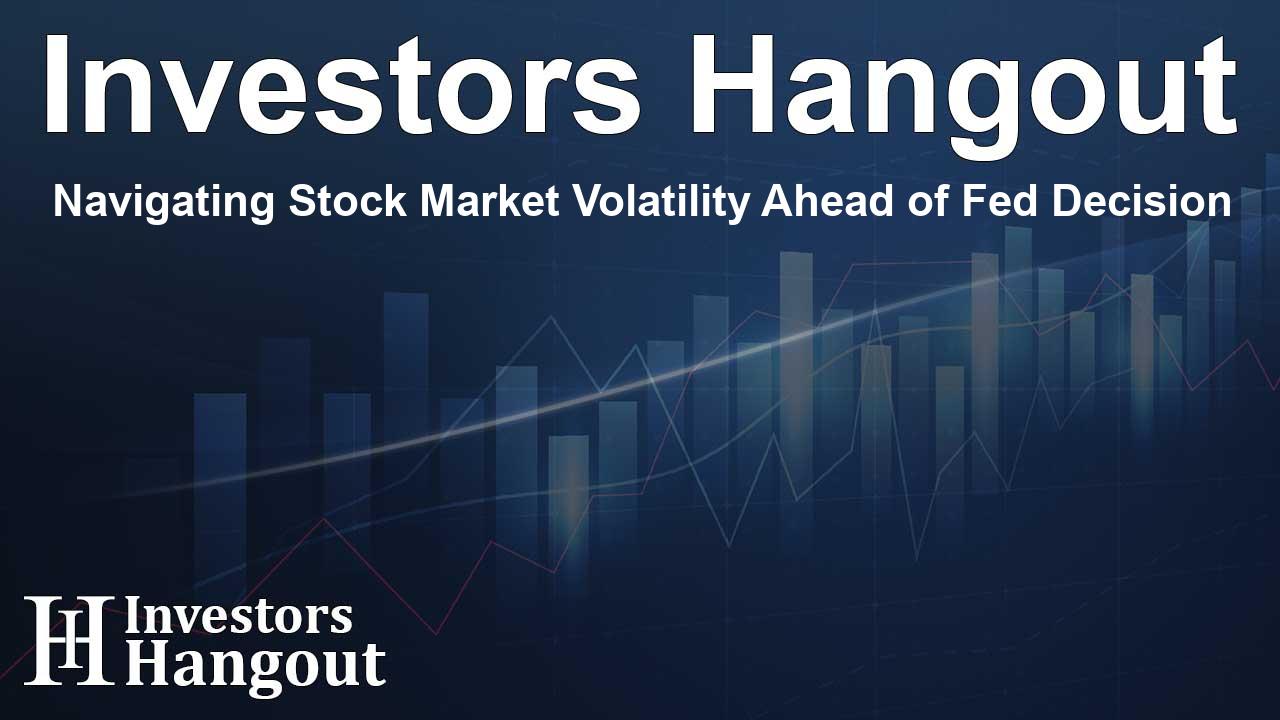Navigating Stock Market Volatility Ahead of Fed Decision

Understanding Market Reactions to Federal Reserve Decisions
The anticipation surrounding the Federal Reserve's decisions significantly influences stock market behavior. Investors are often left wondering whether the Fed's actions will propel stock prices higher or if these movements are already factored into the current market valuations. Recently, the S&P 500 index demonstrated remarkable resilience, achieving a new record high of 5,670.81. This momentous achievement was marked by a brief surpassing of its previous record before closing marginally above last week's levels.
Current market attention is fixated on the FOMC's interest rate decision, slated for a pivotal announcement mid-afternoon, which will undoubtedly stir market volatility. Investors are advised to position themselves carefully in anticipation of the potential outcomes.
Nasdaq 100's Performance and Market Sentiment
Turning to the tech-heavy Nasdaq 100, it witnessed a modest gain of 0.05%, following a slight dip earlier in the week. The index continues to hover around the 19,500 mark, highlighting its struggle to break past its summer highs. Its performance remains notably weaker compared to broader market indices, which impacts investor sentiment.
As day trading commences, forecasts suggest a slight upward opening. Nevertheless, the Nasdaq’s inability to regain its July record high of 20,690.97 poses questions about its immediate future. This uncertainty often leads to fluctuation in investor confidence.
Market Volatility Indicators through the VIX
The VIX index, commonly referred to as the market's fear gauge, displayed notable movements last week, peaking at 23.76, indicating a surge in investor apprehension. However, the recent stock recovery resulted in a pullback for the VIX, which stabilized below the 18 mark the previous day.
Historically, a declining VIX indicates increasing investor confidence, while a rising index usually correlates with bearish market movements. Thus, monitoring VIX trends can offer valuable insights into expected market trajectories.
Analyzing S&P 500 Futures in Light of Fed Announcements
Observing the hourly execution of the S&P 500 futures contracts, which remain locked around the key 5,700 level, reveals strategic support between the 5,680-5,700 marks. As volatility anticipations mount ahead of the Fed's pronouncement, traders are keenly aware of the potential for significant market shifts.
Looking Ahead: The Path Forward
This morning's market indicators suggest a flat opening, while all eyes remain glued to impending Fed decisions. The prevailing question among traders revolves around potential market reactions post-announcement. With speculation leaning towards a 'buy the rumor, sell the news' strategy, there’s a possibility of unexpected bullish trends.
Insightful analysis suggests that traders should brace for turbulence. Thus far, investor behavior tends to reflect skepticism, leading to established positions in response to varied outcomes. The forthcoming Fed meeting could still yield surprising advancements.
As I assess my own market position, I recognize an ongoing bearish outlook, influenced heavily by noted fluctuations and sentiment shifts throughout the trading community. Below is a recap of current developments:
- The recent achievement of the S&P 500 establishing a new record high.
- Collective market focus on the Fed's rate decision stands paramount.
- Current sentiment and positioning lean towards a bearish outlook in the short term.
For those interested in delving deeper into these ongoing developments, my full stock analysis provides comprehensive insights, including detailed assessments of Apple stock and additional S&P 500 futures positions. Staying informed through these analyses is crucial in navigating the complexities of today's trading landscape.
Frequently Asked Questions
What factors influence stock prices around Fed announcements?
Stock prices are significantly affected by anticipated interest rate changes, investor sentiment, and market volatility, all of which can fluctuate sharply before and after Fed announcements.
How does the Nasdaq 100 typically perform compared to the S&P 500?
The Nasdaq 100 is heavily weighted towards technology stocks, which can result in more significant fluctuation and volatility compared to the broader S&P 500 index, which features a wider variety of sectors.
What does the VIX index indicate about market conditions?
The VIX index, or volatility index, measures market expectations of near-term volatility. A rising VIX typically indicates increased fear in the market, while a declining VIX reflects growing confidence among investors.
How should investors react to high volatility periods in the market?
Investors should carefully reassess their positions, taking into account market trends and signals. It may be wise to consider hedging strategies or diversifying portfolios during high volatility to mitigate risk.
Why might a 'buy the rumor, sell the news' strategy be employed?
This strategy is based on the idea that investors will buy stocks in anticipation of positive news (the rumor) and then sell them once the news is confirmed, often leading to a price drop post-announcement.
About Investors Hangout
Investors Hangout is a leading online stock forum for financial discussion and learning, offering a wide range of free tools and resources. It draws in traders of all levels, who exchange market knowledge, investigate trading tactics, and keep an eye on industry developments in real time. Featuring financial articles, stock message boards, quotes, charts, company profiles, and live news updates. Through cooperative learning and a wealth of informational resources, it helps users from novices creating their first portfolios to experts honing their techniques. Join Investors Hangout today: https://investorshangout.com/
Disclaimer: The content of this article is solely for general informational purposes only; it does not represent legal, financial, or investment advice. Investors Hangout does not offer financial advice; the author is not a licensed financial advisor. Consult a qualified advisor before making any financial or investment decisions based on this article. The author's interpretation of publicly available data shapes the opinions presented here; as a result, they should not be taken as advice to purchase, sell, or hold any securities mentioned or any other investments. The author does not guarantee the accuracy, completeness, or timeliness of any material, providing it "as is." Information and market conditions may change; past performance is not indicative of future outcomes. If any of the material offered here is inaccurate, please contact us for corrections.